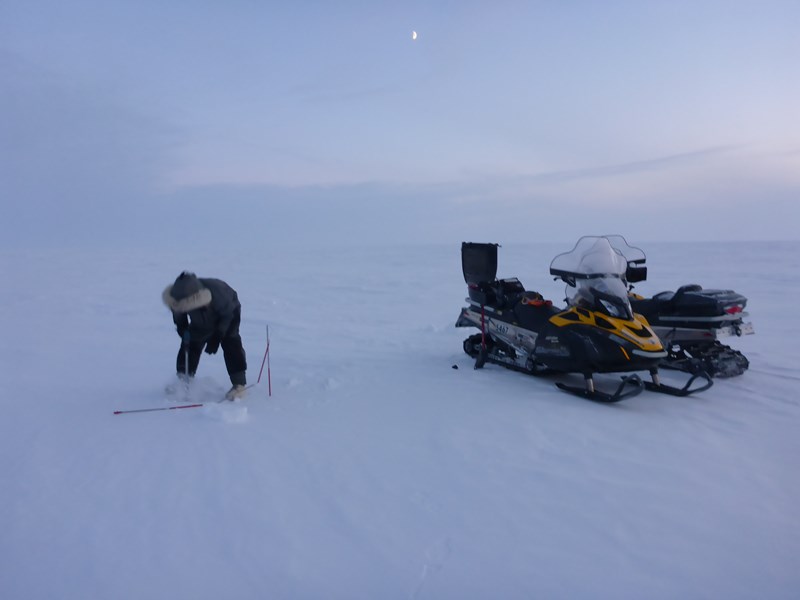- Dec 2
- Children of the Arctic
- Apr 18
- Snow, Wind, and Ice
- Apr 16
- Lesson from the Arctic
- Apr 14
- I Love Doing Science!
- Jan 28
- Bouncing Back in Whiteness
- Jan 27
- The Magical SAR Queen Rules!
- Jan 26
- Arctic Winter Science
- Jan 25
- A Day to Chill
1/25/2018
Waking up to sore muscles and a cold cabin, upon first stepping outdoors we quickly noted that a slight breeze had made -30C feel like -40C, which felt like a significant difference in terms of biological impacts. Thus we did not throw on our bunny boots and sprint out to the tundra immediately. We spent much of the morning watching to see if the floor would thaw. At evening writing time, floor in front of door is still frozen, but otherwise most of floor thawed out. Thank God as it gets cold to walk on!

Around noon Ben made the observation that our snowmachines wouldn’t start. Thankfully these have pull starts in addition to electronics and after fiddling around with them for an hour or so they turned over, otherwise we would have had to get laboriously creative.

Finally in the waning twilight we became sufficiently motivated to brave -40F windchill and drove out 5 km towards middle of Teshekpuk Lake. Snow was smooth and relatively deep for this biggest of thermokarst lakes and ice almost as thin as around Barrow lakes.

Our third stop was Wadepiper Lake, a shallow thaw pond that Rednecked Phalaropes favor during the summer. We checked on our only snow-ice buoy set on a bedfast ice lake. This one goes about 1-m down into the sublake permafrost and also measure air temp, snow depth, and ice thickness. Satellite transferred data can be viewed near real-time at (http://www.data.beadedstream.com/projects/UAF_Buoy_YR1/tacdata.php?webid=JXSVCNST54BUVE6RE6MQ&units=C&tz=). Record shows it froze solid in late December, but active layer is still freezing today.
